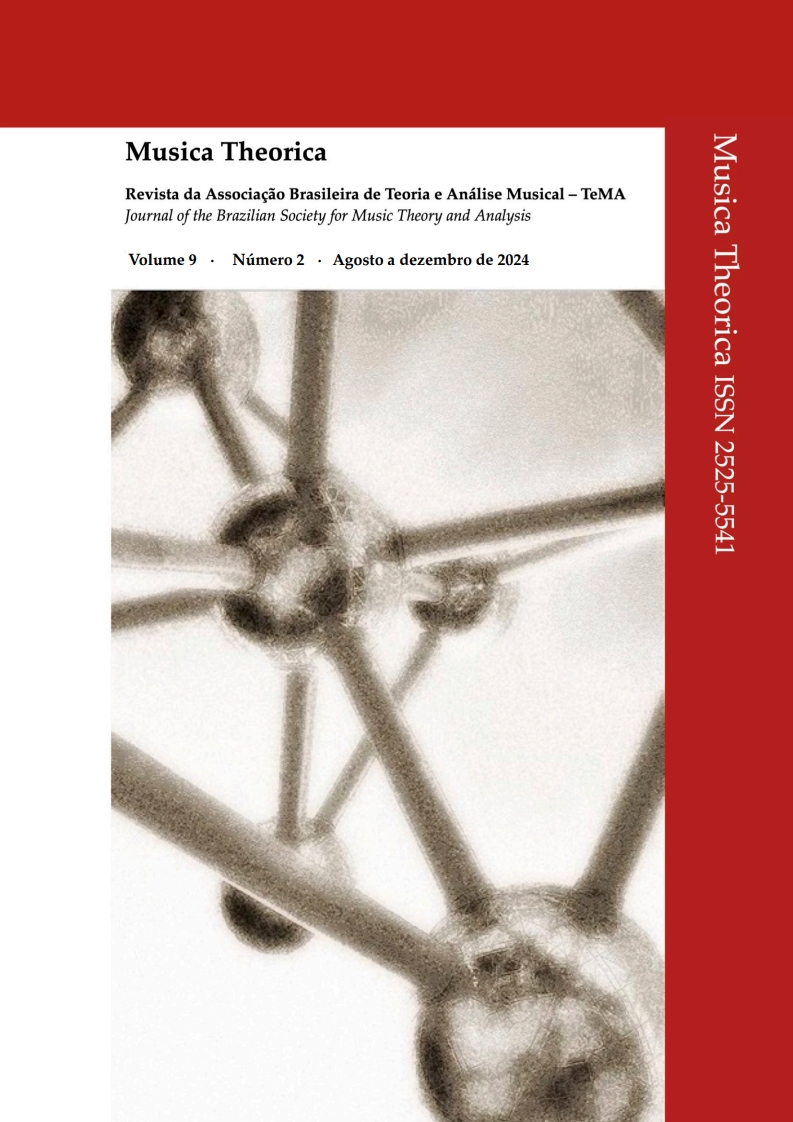Arnold Schoenberg and the Paradox of his Klavierstück Op. 33a
a Bloomsian Process of Misreading of the Sonata Form
DOI:
https://doi.org/10.52930/mt.v9i2.319Abstract
This article explores the apparent and paradoxical contradiction present in the Klavierstück Op. 33a by Arnold Schoenberg, in which a musical form inherently typical of classical tonality — the sonata form — was used to organize a composition written in a dodecaphonic language which is in a certain way “alien” to traditional tonality. The text discusses in what capacity the harmonic languages of traditional tonality and the twelve-tone method are foreign to each other, investigating, through the use of Harold Bloom’s theory of the Anxiety of Influence (2002), the compositional process of that work in terms of an action of misreading and poetic appropriation of musical classicism that resulted in the specific musical writing used by Schoenberg. The considerations on the processes of influence proposed by Bloom — in the figures of his six revisionary ratios, clinamen, tessera, kenosis, askesis, daemonization, and apophrades — are woven and illustrated alongside a detailed analysis of the formal structure and the harmonic procedures used in the Klavierstück Op. 33a, which is done using the tools provided by American Set-Theory together with Edmond Costère’s theories (1954) on the polar attractiveness of notes, explained further by means of selections from theoretical observations on the classical sonata form and its structural components made by Schoenberg himself (1996) in his pedagogical activities as a music theorist. The article argues and tries to demonstrate that the solution to that work’s paradox stumbles on the confirmation of the magnitude of the historical importance held by Schoenberg and his musical and theoretical works, with the unveiling of the unique and special place he managed to circumscribe for himself inside music history by means of a skillful and ingenious command of the influences he received from his predecessors.


